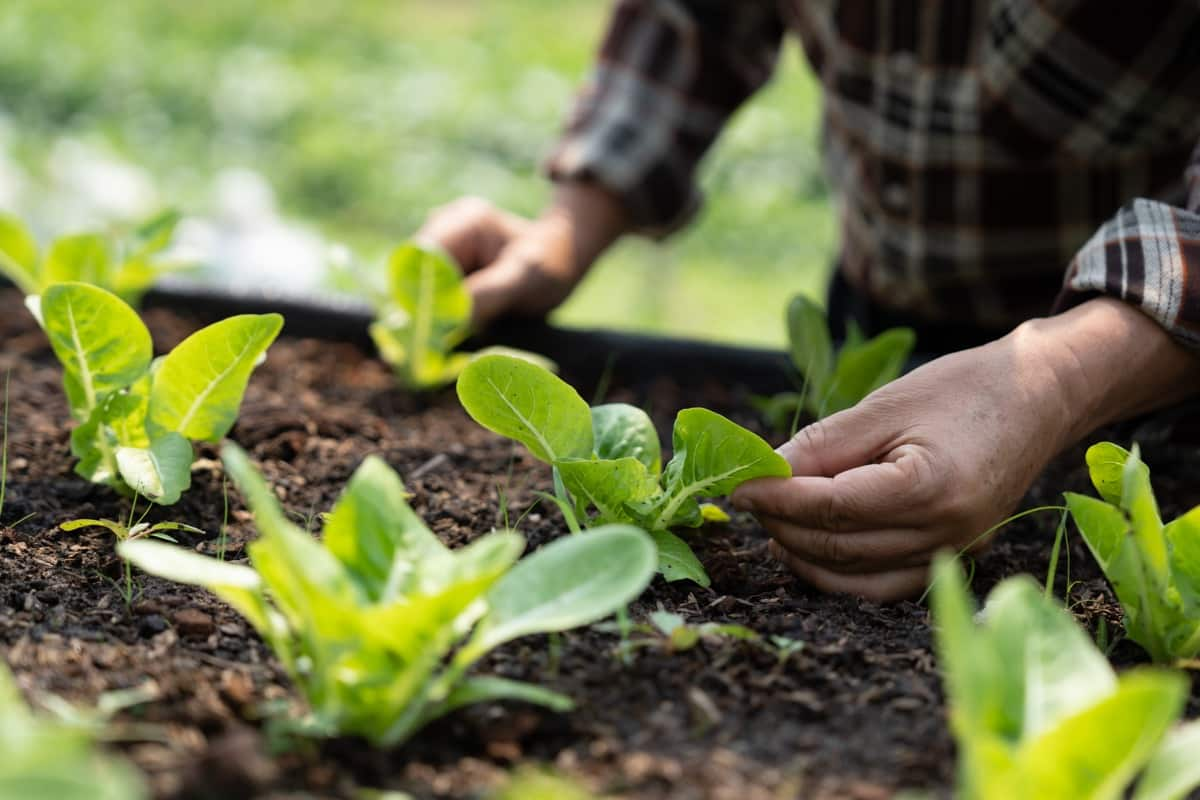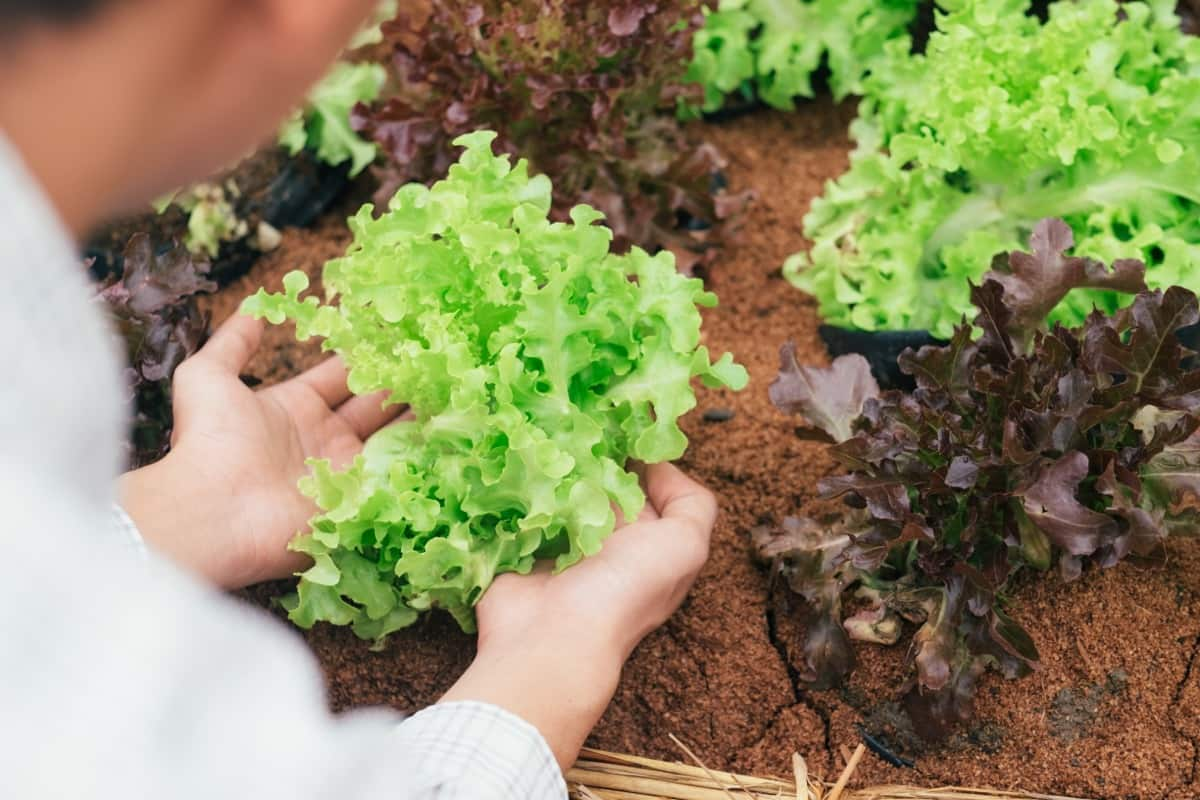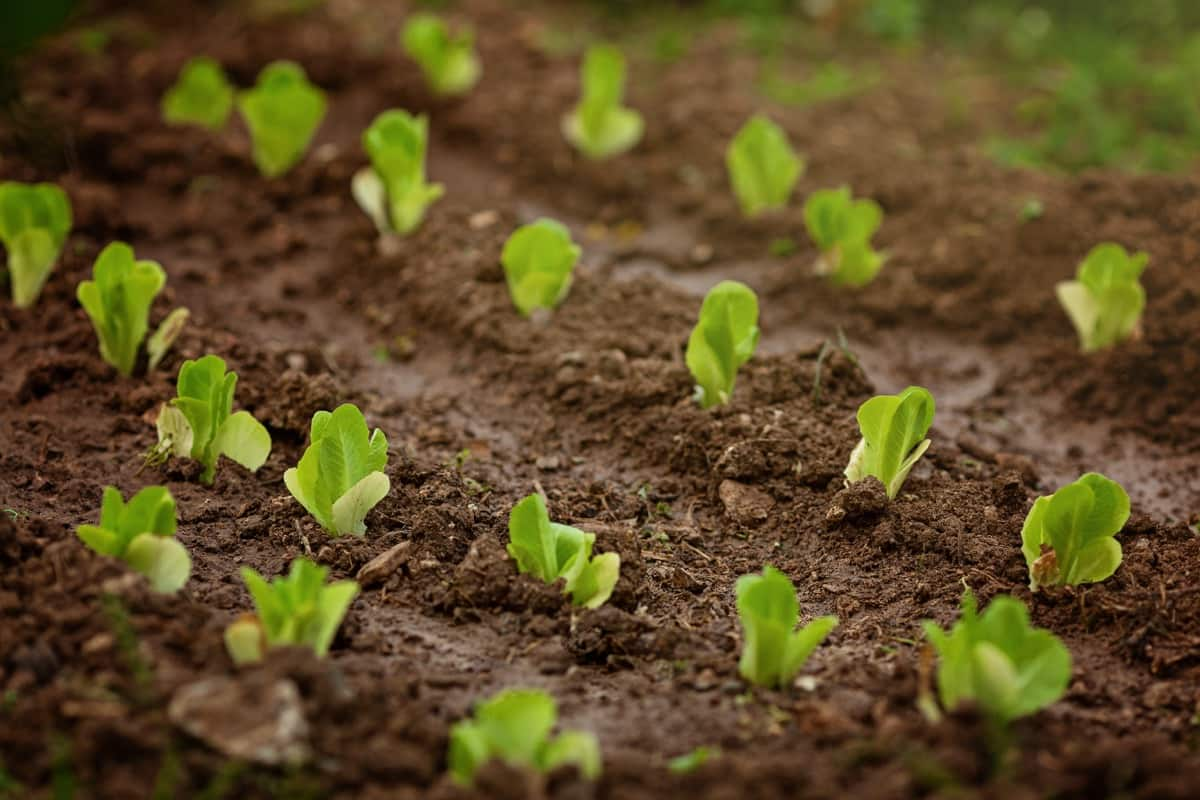Gardening, while a rewarding endeavor, comes with its own set of challenges. In particular, lettuce, an incredibly popular vegetable for home growers due to its versatility and rapid growth cycle, can encounter many issues, ranging from discoloration to slowed growth, pests, to diseases. Lettuce diseases and control are common concerns for gardeners as the health of these delicate plants can quickly deteriorate if not properly managed.

In addition, hydroponic lettuce diseases pose a unique challenge as the plants grow in water rather than soil. These concerns also extend to traditional lettuce growers, who frequently have to contend with lettuce pests and diseases. This article will explore ten common problems with lettuce, from the mystery of not growing bigger to the menace of leaf spot lettuce diseases, providing treatment solutions for each.
10 Common Problems With Lettuce
Yellowing Leaves on Lettuce Plants
Yellowing leaves are a frequent issue observed in lettuce plants. This condition often signals a nutrient deficiency, specifically nitrogen. This vital nutrient aids in the growth and development of plants, leading to lush green foliage. When lacking, leaves may turn yellow as the plant struggles to perform photosynthesis efficiently. If you notice your lettuce leaves turning yellow, consider incorporating a nitrogen-rich fertilizer into your care regimen. Following the manufacturer’s instructions closely is important to avoid over-fertilization, potentially harming the plant.
Wilting Lettuce Plants
Lettuce plants are primarily composed of water, so when they begin to wilt, it’s usually a clear sign of dehydration. Due to its high water content, lettuce requires consistent and sufficient watering to thrive. If not properly watered, the plant will quickly wilt and, if left unchecked, eventually die.
The solution here is relatively straightforward: ensure your lettuce plants receive adequate water, generally around 1 to 1.5 inches per week, depending on your specific climate conditions. Monitor your plants closely, particularly during hot, dry periods, and adjust your watering schedule as necessary.
Lettuce Plants Not Growing
Gardeners often find their lettuce not growing bigger, a situation that can be both frustrating and perplexing. The absence of growth is caused by factors like overcrowding, insufficient light, or lack of nutrients. Overcrowding can stunt growth as plants compete for resources. Ensure you’re providing enough space between your lettuce plants to enable them to grow.
Similarly, lettuce plants need plenty of sunlight, ideally 6-8 hours daily. Without adequate light, growth can be significantly slowed. Lastly, nutrient deficiency, particularly in nitrogen, phosphorus, and potassium, can prevent plants from growing. Regularly apply a balanced fertilizer to your lettuce plants to ensure they receive all nutrients.
Lettuce Plants With Holes in Leaves
Holes in lettuce leaves are a common indication of pests. Slugs, snails, and various types of insects are all known to munch on these juicy, tender leaves. A good practice to minimize damage is to regularly check your lettuce plants, particularly under the leaves, for the presence of these pests. Remove them manually when found, and consider using an organic, non-toxic pesticide to deter future invaders. Also, practicing crop rotation can help disrupt the lifecycle of pests, reducing their impact on your lettuce plants.
In case you missed it: Frequently Asked Questions About Growing Lettuce from Seed to Harvest

Lettuce Plants With Black Spots
Black spots on lettuce can signal the presence of leaf spot lettuce diseases, specifically bacterial leaf spots. This condition is typically caused by excess moisture and poor air circulation around the plants. If left untreated, the disease can spread rapidly, leading to significant crop loss.
To treat and prevent this condition, ensure your lettuce plants are spaced properly to promote good airflow. Also, practice watering at the base of the plant early in the day so the leaves have time to dry before nightfall. Remove and dispose of infected leaves immediately to prevent the disease from spreading.
Lettuce Plants With Brown Edges on Leaves
Brown edges on lettuce leaves can signal tip burn resulting from inconsistent watering. Lettuce plants are sensitive to water fluctuations, and when they become too dry, they may display this symptom. Excessive salt levels in the soil may result in plant root damage and cause leaf edges to turn brown. The solution is to ensure consistent watering and perhaps conduct a soil test. If a high salt concentration is found, you might need to flush the soil with plenty of water to dilute the salt content.
Lettuce Plants Drooping
Lettuce plants can sometimes be seen drooping, an indication often linked to heat stress. Lettuce prefers cooler weather, and heat can cause the plants to wilt or droop during hot summer months. Providing shade is an excellent way to help your lettuce cope with the heat, particularly during the hottest parts of the day. This can be achieved by placing shade cloth over the plants or planting them near taller crops that provide natural shade.
Lettuce Plants Attracting Pests
Pests are another common problem that lettuce growers face. Aphids, slugs, caterpillars, and other pests are often attracted to the tender leaves of lettuce plants. Implementing integrated pest management practices can be very effective in this scenario. Regularly inspect plants for pests, remove them, and introduce beneficial insects like ladybugs for natural pest control. Employ crop rotation, intercropping with pest-repellent plants to effectively manage pests.
Lettuce Plants With Powdery Mildew
Powdery mildew is a fungal infection seen as white powder on lettuce leaves. This disease thrives in humid conditions and can spread rapidly if not addressed quickly. To control powdery mildew, remove and dispose of any infected leaves as soon as you spot them. Avoid overhead watering, as this creates a moist environment that encourages the growth of the fungus. Fungicides can also be used as a last resort to control the spread of this disease.
Lettuce Plants With Rotting Roots
Rotting roots are often a sign of overwatering or poor drainage. When lettuce plants receive too much water or the water is not draining properly, the roots can become waterlogged and rot. This condition, known as root rot, can cause the plant to wilt and, if not corrected, die. To prevent root rot, ensure that your lettuce plants are planted in well-draining soil and not overwatered. If growing hydroponic lettuce, ensure the water is oxygenated and the roots aren’t always submerged.
In case you missed it: 12 Lettuce Companion Plants for Better Growth and Yield

Conclusion
Growing lettuce can come with several challenges. These issues can be disheartening for any gardener, from yellowing leaves to rotting roots. However, understanding the common problems and their solutions can go a long way in ensuring a healthy and productive lettuce crop. With this knowledge, you can address these problems head-on and enjoy the fruits of your labor – a healthy, vibrant lettuce harvest.
- Ultimate Guide to Ossabaw Island Hog: Breeding, Raising, Diet, and Care
- Ultimate Guide to Juliana Pig: Raising Facts, Size, Diet, Care, and Lifespan
- Raising Lleyn Sheep: Disadvantages, Price, Uses, Characteristics, and Care
- Ultimate Guide to Meishan Pig: Breed Facts, Breeding, Raising, and Care
- Ultimate Guide to Teacup Pigs: Raising, Diet, Lifespan, Cost, and Care
- Guide to Raising Poll Dorset Sheep: Facts, Profile, Characteristics, Uses, and Care
- Ultimate Guide to Bighorn Sheep: Characteristics, Diet, Lifespan, Breeding, and Lifecycle
- Ultimate Guide to Raising Katahdin Sheep: Farming Facts, Breed Profile, Uses, and Care
- Ultimate Guide to Raising Oreo Cows: Belted Galloways Farming Facts, Profile, Uses, and Care